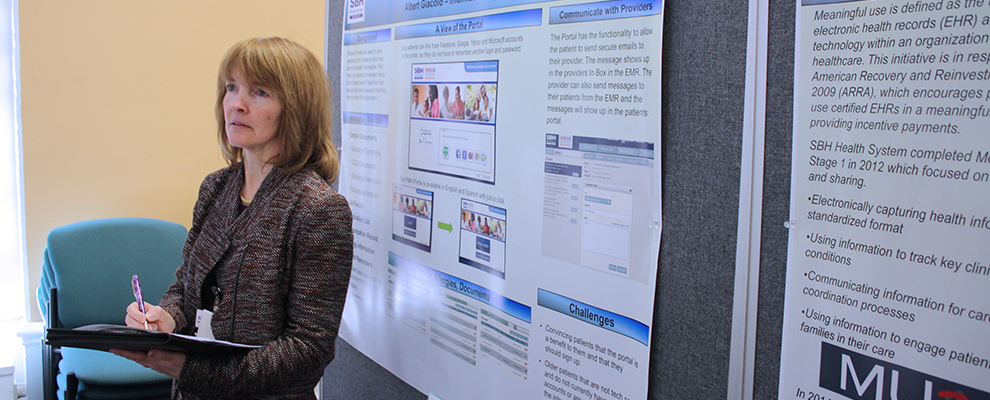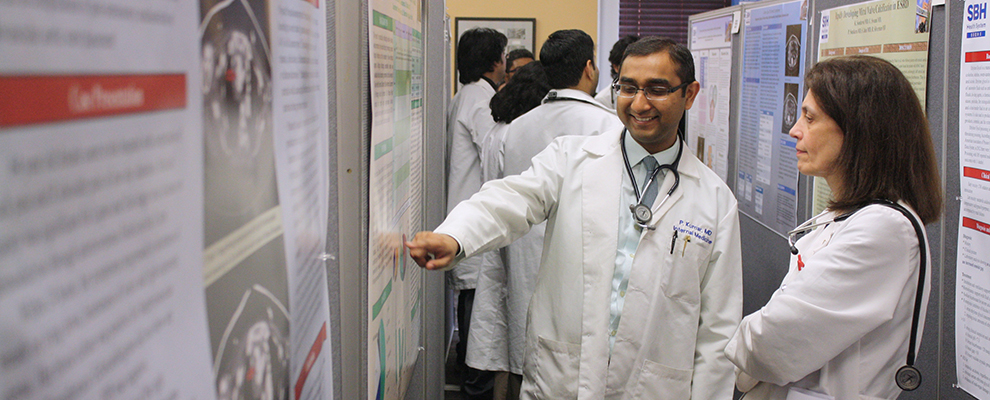Designing the Project
Specific Aims
Describe in very specific language, the objectives and hypotheses that you are trying to prove.
- Specify the population that you wish to use.
- Try using bullet points for each objective.
- Use clear and precise language.
- Evaluate the feasibility of obtaining the information.
Example: You would like to do a study to determine Vitamin D levels in the Bronx population.
- Are you going to test every single person in the Bronx (unlikely)? To narrow the population will it be all patients attending SBH clinics? Or perhaps looking only at diabetic patients attending SBH? Will there be a control group of non diabetic patients attending a clinic at SBH?
- Let’s assume you decide to test Diabetic patients in the Bronx. Is it possible to get a list of these patients? Since diabetes is coded it is possible to get a listing. Once IRB approved, you can pose a query by emailing Dr. Barmecha with your specific request.
- What are your aims/objectives?
- Determine if Diabetic patients at SBH are vitamin D deficient
- Compare them to non diabetic patients attending the same clinic
- Determine if there are any co factors that are contributing to vitamin D deficiency
Study Designs
Deciding what study design to use is very important. Listed below are some basic study designs. If you have questions on how to proceed discuss this with your attending, or you can present your project at the research committee. A statistician will also be available to help in designing your project.
- Retrospective – studies that look back at what happened, a chart or document review
- Prospective– following patients from current to future status. you need patient consent.
- Survey Reviews Based on questionnaires
- Case Control studies: Usually retrospective, controls are selected for not having disease. Food for rare outcomes and small number of patients.
- Cohort Study: usually prospective, yields incidence rates, requires large numbers, usually study takes a long time to complete.
Our Example: You would like to do a study to determine Vitamin D levels in the Bronx population.
Type of study:
- Prospective study
- Consent needed for patient enrollment
- Determine the target number of patients that you will need to enroll to show a difference between the diabetic and non diabetic group
(if not sure of the statistics or even your study design, you can present your work to the “research committee”.
Retrospective studies pose a question and look back. They use information that has usually been collected for reasons other than research, such as administrative data and medical records. Therefore, the outcome of interest has already occurred (or not) by the time the study is started.
For example, researchers might turn to Workplace Safety and Insurance Board (WSIB) administrative data. They might retrieve low-back injury lost-time claims within a certain time frame, and collect information on medical treatments (physiotherapy) and return-to-work outcomes in order to look for associations among them.
Case-control studies are considered the highest quality of retrospective study because they try to approximate a control or comparison group. In our study, claim information would be collected on the population at risk: workers with low-back pain. They would be divided into two groups. The first group would be the control group, those who did not return to work. The second group would be the case group, those who did return to work. Claim information for workers who underwent physiotherapy might be compared to claim information on those who did not (the control group).
What the researchers would be looking for is an odds ratio: the odds of returning to work among those who received physiotherapy compared to the odds of returning among the no-physiotherapy group. An odds ratio of less than 1.0 would mean that RTW is less likely among those who received physiotherapy, and an odds ratio greater than 1.0 would mean that RTW is more likely among those who got physiotherapy treatment.
Despite this, retrospective studies are usually unable to reach cause-and-effect conclusions. For example, we cannot conclude that physiotherapy definitively improves RTW outcomes among back-injured workers. This is because of confounding factors — those unforeseen and unaccounted-for variables that may be affecting results. However, retrospective studies do give rise to hypotheses (e.g. that it looks like physiotherapy may improve RTW outcomes), which can then be further tested.
Source: At Work, Issue 59, Winter 2010: Institute for Work & Health, Toronto
Prospective studies ask a question and look forward. The studies are designed before any information is collected. Study subjects are identified (workers with low- back injury claims) and followed forward to see if the outcome of interest (return to work) happens over time. This outcome is assessed relative to the intervention factor (physiotherapy).
Randomized controlled trials, considered the gold standard of study design, are prospective studies. They can provide evidence of cause-and-effect relationships and support changes in clinical practice or workplace interventions. In a randomized controlled trial, subjects are randomly assigned to receive the intervention or control treatment, and outcomes are evaluated after the intervention period. The control group is the group that receives standard care, no intervention or a placebo.
In our example, the researchers would randomly assign the workers with low-back injuries into two groups: one that is to receive physiotherapy and one that is not. These two groups would be followed over a period of time, and return-to-work outcomes among both would be noted.
The down side of prospective studies is that they are more expensive and time-consuming to design and carry out. As well, it is difficult to follow people for a long time, so situations in which there is a long wait between the exposure and outcome are not well suited to prospective studies. However, for reaching conclusions about the effectiveness of interventions, these studies are the most definitive.
Source: At Work, Issue 59, Winter 2010: Institute for Work & Health, Toronto
Survey Reviews
What Do Survey Data Really Mean? Considering Issues of Causality and Temporality in Survey Research
affiliation: School of Journalism and Mass Communication
Seth M. Noar, Ph.D.
Download PDF Download PPS
Using Latent Variable Models in Survey Research
affiliation: Arizona State University
Roger E. Millsap
Download PDF Download PPS
Purposes of Surveys and Questionnaires: Assessing Prevalence, Risk and Outcomes
affiliation: University of Minnesota
Ken Winters, Ph.D.
Download PDF Download PPS
Patient Reported Outcomes (PROs) Tools for Measurement of Health Related Quality of Life
affiliation: Northwestern University Feinberg School of Medicine
David Victorson, Ph.D.
Download PDF Download PPS
Developing and Testing Survey Questions
affiliation: National Cancer Institute
Gordon Willlis, Ph.D.
Download PDF Download PPS
Collaborating with Survey Centers to Conduct Survey Research
affiliation: NORC at the University of Chicago
Michael Davern, Ph.D.
Download PDF Download PPS
Collecting Data
Create a data collection sheet. The sheet should contain all the data (variables) you will be collecting information on. It can have patient identifiers but must be kept in a secure manner.
Some hints on data collection:
- If you are not sure if you need a certain data, add it to the sheet. It takes a lot more work to get this data at a later time.
- If there are multiple people collecting data, standardize the questions so that everyone understands it in the same way. For example: if you ask does this patient have fever? If fever is not defined (100.4) then the data will not be accurate.
- After IRB approval, pilot your data collection sheet for the first couple of patient. This will help ensure that all researchers involved are collecting all the data needed using the established definitions.
- Remember to keep the data secure.
- Most likely the data will be entered in SPSS or Excel. Become familiar with these programs prior to setting up the data collection sheet. If possible, have one person enter the data. This will allow the data to be consistent.
Example: You would like to do a study to determine Vitamin D levels in the Bronx population.
We have determined that:
• It is a prospective study
• Consent is needed for patient enrollment
• You will determine the target number of patients that you will need to enroll to show a difference between the diabetic and non diabetic group (if not sure of the statistics or even your study design, you can present your work to the Research Committee)
A possible data collection sheet for the proposed study can include:
• Name or/and code number, age, gender, race
• Presence of diabetes yes/no
• Results of vitamin D levels
• Underlying medical conditions
• Previous diagnosis of vitamin D deficiency
• On Vitamin D supplements
• Etc.
Statistical Support
Statistical Support/Data Analysis
Both Excell and SPSS have a lot of statistical support. Become familiar with these programs. Please note that data entered into a data base should not contain patient identifiers. The library has manuals for these programs. SPSS is also available on some of the computers in the library. In addition, Dr. Yens is available for statistical support. Please contact the research committee.
STATISTICAL LECTURES
The research committee is available to review your study prior to IRB approval. This is a good forum for you to check if your study design will help answer the questions that you have generated. Dr. Yens, the statistician, will also be present.
To participate, please email the research committee at sbhrc@sbhny.org
 GIVING
GIVING (718) 960-9000
(718) 960-9000




